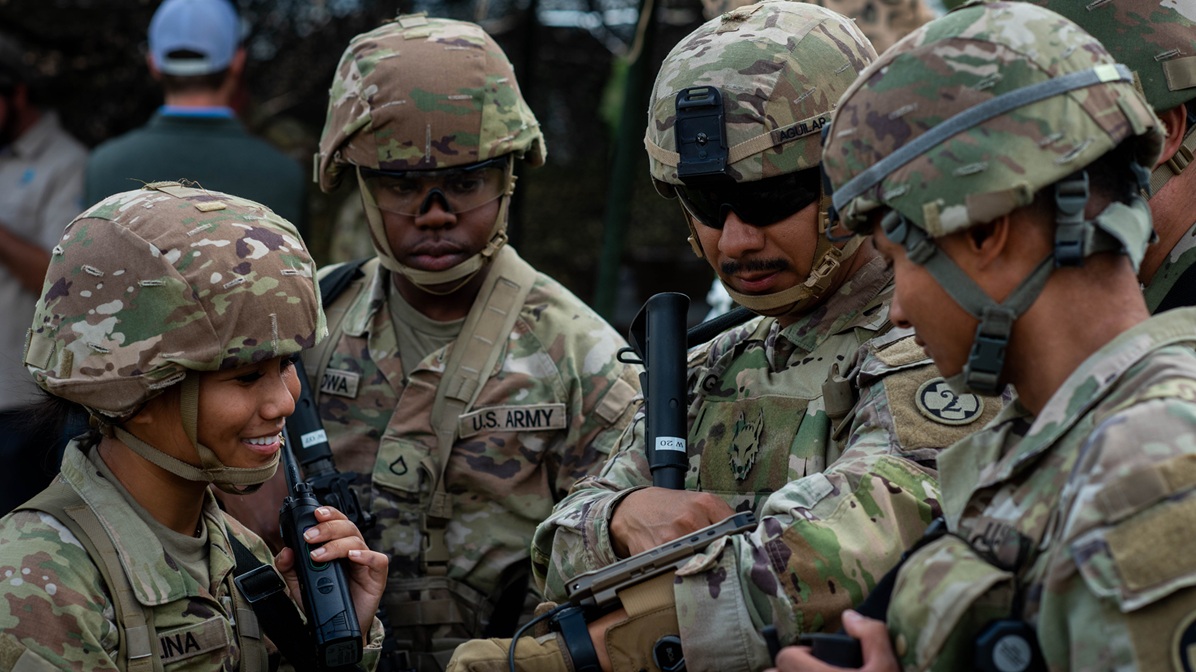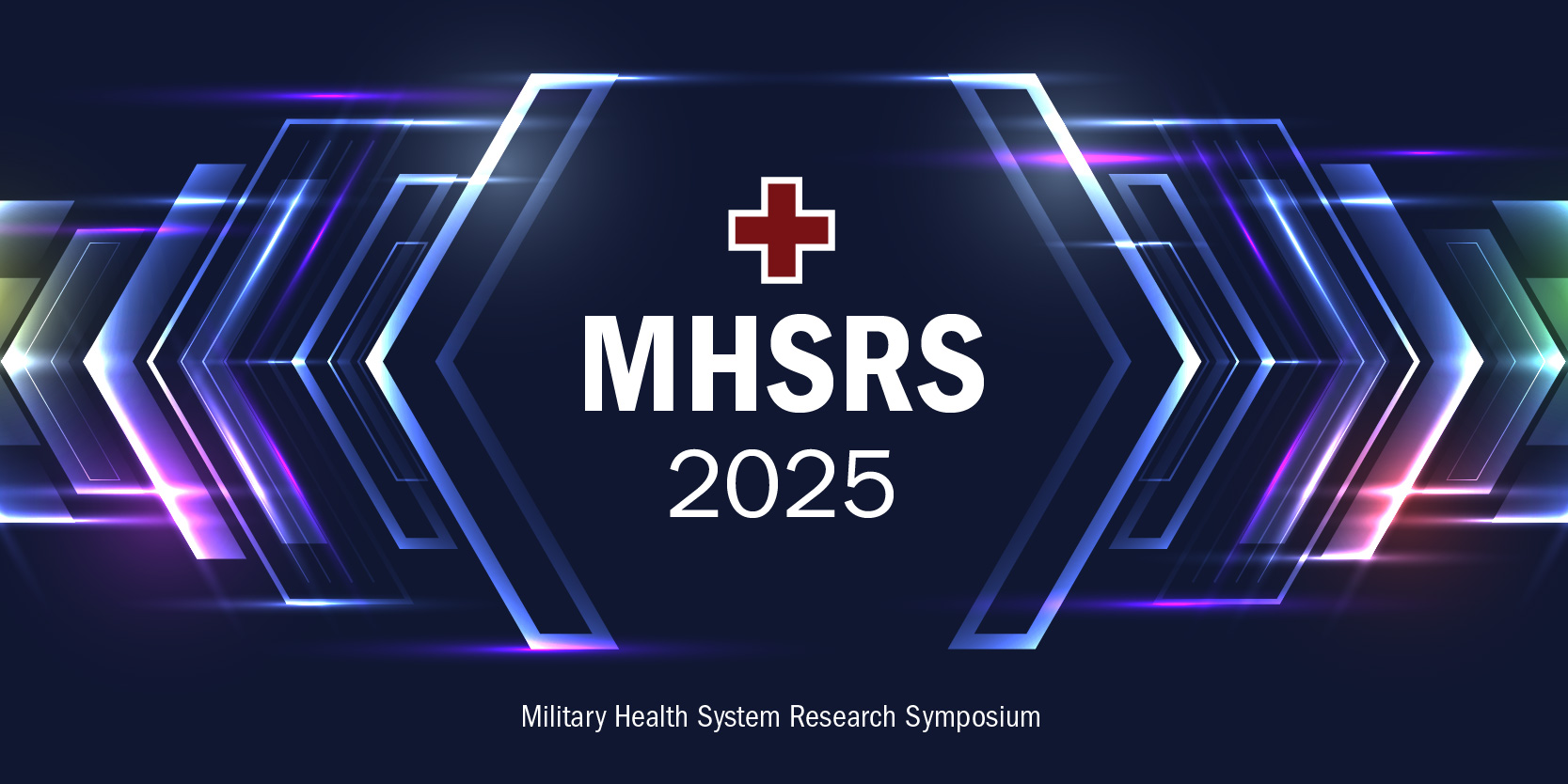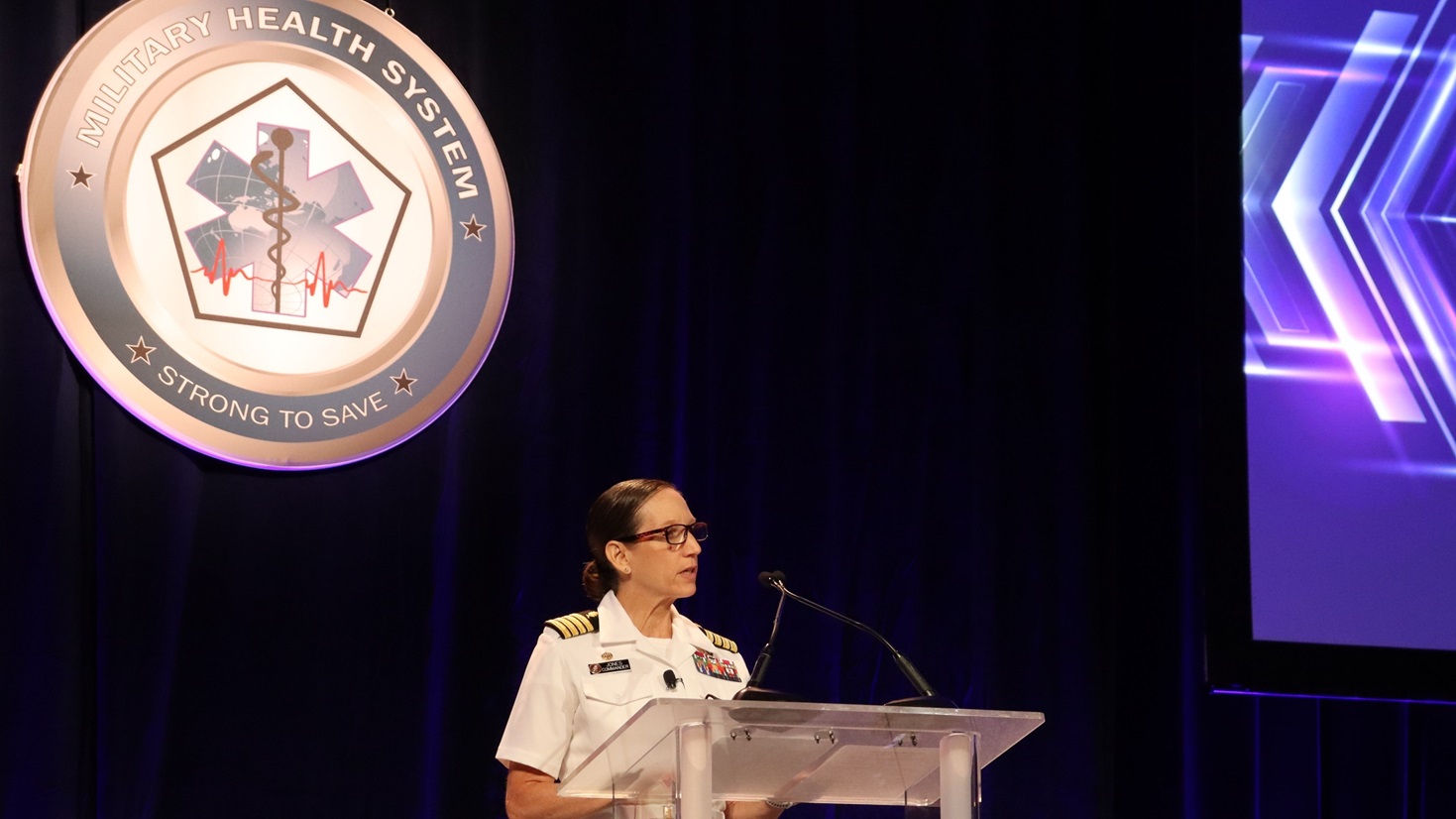Sept. 04, 2025 | By Paul Lagasse, Medical Research and Development Command
FORT DETRICK, Md. – Before new military medical capabilities developed at the Defense Health Agency Research & Development-Medical Research and Development Command can be delivered to the warfighter, they must be evaluated to ensure they are ready for use in real-world conditions. For many devices, the best way to do that is to put them into the hands of Service Members participating in Army, joint service, and multinational training exercises, and let them “kick the tires” in the field. Making that happen is the responsibility of DHA R&D-MRDC’s Experimentation Integration Cell.
Since its inception in 2022, the EI Cell has helped researchers throughout the command participate in a large number of experimentation events, ranging in scale from tabletop exercises to the annual Project Convergence Capstone joint and multinational event. The user feedback from participants in these events has helped the researchers improve the design, functionality, and reliability of their capabilities – leading to new cutting-edge treatments and devices that ensure our warfighters remain resilient, adaptable, and lethal in any scenario.
“Military medicine doesn’t exist in a vacuum,” says Eva Rosvold, the EI Cell’s director. “Participating in service-centric experimentation events is valuable because it allows designers to see how their products are used in the larger operational context. The information gleaned from events can materially shape the development path of the capability and lead to significant improvements and innovations.”

Rosvold moderated a well-attended panel discussion on “Positioning Innovative Products for Future Force Integration through Key Military Exercises” at the 2025 Military Health System Research Symposium in Kissimmee, Florida, in August. The session included speakers from DHA R&D-MRDC, the Center for Naval Analyses, the U.S. Army Medical Capability Development Integration Directorate, and the U.S. Marine Corps Warfighting Laboratory. The panelists shared their insights on identifying opportunities for experimentation, preparing products for experimentation, and applying the lessons learned from experimentation events to iterate improvements.
Rosvold was among over 200 DHA R&D-MRDC experts in military infectious diseases, combat casualty care, military operational medicine, chemical biological defense, and clinical and rehabilitative medicine who attended the annual event, the DOD's premier medical science research and development meeting. To see photos of DHA R&D-MRDC's participation in this year's MHSRS, visit the event's Flickr album.
Getting the most out of an experimentation event requires beginning the planning process far in advance. The EI Cell works with researchers to identify events that are appropriate for the type of product they are developing, the product’s technology readiness level, and the outcomes that the researchers are seeking to gain from participating in the event. Advance planning is also important for coordinating logistics such as funding and travel. To help get the most out of an experimentation event, Col. Laura McGhee, whose responsibilities at DHA R&D-MRDC include translational science and military performance, says that researchers should try to answer several questions early on in the planning process, such as: Is it a physical product? What is its purpose? How will it be used in the operational environment? Who will be using it? Does it match the goals of the exercise?
“It's important to target your product to a particular experimentation event, because not all events have the same scale or level of complexity, and not all products are at the same technology readiness level,” says McGhee, who spoke about the most effective ways to translate laboratory research into experimentation at the MHSRS panel session. “It's a matching game.”
User feedback from experimentation events can drive design choices and iterations that improve usability and experience – all of which directly benefits the warfighter. Such feedback, for example, was crucial for helping researchers at DHA R&D-MRDC to identify improvements that could be made to their pioneering standoff casualty detection and vitals monitoring designed to operate as a small unmanned aerial system camera payload. Over the course of four years, the team was able to continuously update and iterate the system’s design, hardware choices, and user interface based on feedback provided by soldiers who participated in four real-world experimentation events.
“While experimentation, especially for larger events, is mainly seen as a venue for rigorous evaluation, it also can be an invaluable tool for continued research and development,” says Ethan Quist, an expert in medical robotics and autonomous systems at DHA R&D-MRDC, who spoke about his team’s experience at the MHSRS panel session. “Failing early in R&D will lead to earlier lessons learned, force the adoption of a soldier-centered design mindset, and lead to more mature testing and evaluation.”
Originally, Quist’s team collected data from short test flights in parks and public spaces near their lab, using simulated casualties and mannequins. While these experiments provided valuable initial data for validating the system’s algorithms, they lacked the fidelity of an operational setting. An invitation from MED CDID to participate in the Project Convergence 4 capstone exercise presented an opportunity to pivot the project toward a more operator-centered design. First, the team needed to participate in a risk-reduction event – Northern Strike 2023, an Army National Guard exercise in Michigan. The team developed a preliminary user interface to display vital sign data on the UAS controller, which required them to identify the information that would be most useful to medics and determine how best to present and deliver it. For PCC4, the team successfully developed a software plugin that allowed the drone data to be integrated into the Android Team Awareness Kit, a smartphone-based targeting, navigational, and data sharing system widely used by the DOD.
The following year, Quist’s team took their improved system to Northern Strike 2024 and PCC5, where they further refined their human-detection and vitals monitoring algorithms, and improving the robustness and usability of the system’s software. Their experience also revealed limitations in their chosen UAS platform that can be addressed in future experimentation exercises. The lessons learned at PCC5 opens the door for potential integration with many program-of-record UAS platforms – resulting in a far more sophisticated and capable system than the initial vision of what the system could be.
Quist says that the support provided by the EI Cell was crucial for enabling his team to continue evolving the hardware and software in response to user feedback obtained at the various experimentation events. By serving as a single point of contact for both the researchers and the exercise sponsors, and by providing logistical support to the experimentation team before, during and after the experimentation events, the EI Cell allowed the team to focus its efforts on improving the system’s hardware and software, rather than on logistics. It’s a lesson – and a partnership – that his team will exploit for future evaluation activities.
“Our goal is to get out of the lab early, leverage experimentation events, collect the most relevant data we can, iterate on performance between events, and keep the warfighter at the center of all development and design choices,” says Quist. “The question is not if the technology works, it’s if the technology makes an impact on the soldier’s ability to complete their mission.”





